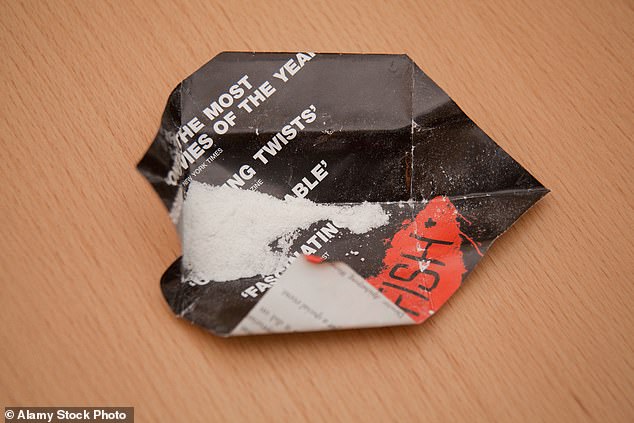Minute by minute, the slow and horrifying death from ketamine overdose – as Matthew Perry’s doctors say party drug ‘froze’ his body before it killed him
Special K, Ket or Kit Kat was popular as a party drug in the late 1990s, when it was widely used at all-night raves, despite its narcotic effects.
But its popularity declined in the 2000s, when it became a Schedule III drug in the United Kingdom. Concerns arose about side effects, including hallucinations and, in rare cases, seizures.
Now the drug is getting renewed attention for its role in the death of Friends star Matthew Perry, who was injected with ketamine 21 times in the week before his death.
The doctor accused of supplying the drug that ultimately killed him has given disturbing details of the drug’s effects on the actor’s body, including seizures and “freezing”, just days after the fact. before his death.
Here we reveal how the substance – now used in private clinics for its supposed antidepressant effects – can wreak havoc on the body within an hour of taking even one big hit, leaving users paralysed, unable to breathe and choking on their own vomit.
Here we reveal how the substance – now used in private clinics for its supposed antidepressant effects – can wreak havoc in the body within an hour of taking a big hit, leaving users paralysed, unable to breathe and choking on their own vomit.

The drug is attracting renewed attention for its role in the death of Friends star Matthew Perry (pictured), who was dosed with ketamine up to six times a day in the week before his death.
Even in low doses, long-term use can cause serious, irreversible damage to the bladder and kidneys, and cause severe abdominal pain known as k-cramps.
Ketamine works as an anesthetic by blocking the neurotransmitter N-methyl-D-aspartate (NDMA). This neurotransmitter regulates the functioning of the nervous system.
This can quickly reduce sensations, prevent pain, induce sleep, or even impair memory.
For this reason, it is usually taken in small doses for non-anesthetic purposes, and in large doses as an anesthetic in a medical setting, such as before surgery.
At smaller doses, users may experience euphoria, out-of-body experiences, and hallucinations.
When ketamine is injected, its effects can take hold within a minute. Users typically feel such effects within five to fifteen minutes when snorting it and within half an hour when swallowing it.
Snorting ketamine produces a stronger ‘rush’, may carry a greater risk of addiction, and can damage the nasal cavity.
Although its effects can last for about an hour when taken in smaller doses, a user’s coordination and senses can be affected for up to 24 hours after initial use.
Signs and symptoms of ketamine overdose or toxicity may vary depending on the amount of Ket ingested.
Typically, users experience increased heart rate and even palpitations within minutes of taking the drug.
At the same time, blood pressure drops in 10 to 20 minutes, resulting in a dizzy and faint feeling. A dramatic rapid drop serves as an important sign of overdose or toxicity, which can happen with one large dose.
The numbing effect also causes users to become unresponsive more quickly.
In this state, users experience involuntary rapid eye movements, dilated pupils, and stiffening of the muscles, causing them to ‘freeze’.
The relaxing effect of this substance on the muscles also causes the respiratory system to be depressed, causing people to suddenly have difficulty swallowing and breathing.
This lack of oxygen can even lead to permanent brain damage.
Tolerance to the drug, which is usually available as a crystalline powder or liquid, is known to develop quickly with recreational use.
This results in users needing more and more to experience the same high, increasing the risk of overdose or side effects.
Higher doses can also lead to a phenomenon called the ‘k-hole’: an intense feeling of dissociation, delirium and a sense of being disconnected or unable to connect with reality.

Perry was found unconscious in the hot tub of his LA home by his assistant Kenneth Iwamasa on October 28. His cause of death was later determined to be “the acute effects of ketamine.” Pictured, Perry in August 2023, three months before his death

Special K, Ket or Kit Kat (pictured), as it is also known, was popular as a party drug in the late 1990s, when it was widely used at all-night raves.
According to the Bristol Drugs Project, a drug and alcohol support charity, a heavy and potentially lethal dose is around 150mg, compared to a typical dose of 30-75mg.
Experts have long warned that while death from ketamine poisoning itself is rare, paralysis is a side effect of the drug. If users vomit, they risk choking on their own vomit.
The shocking details of the days leading up to Matthew Perry’s death emerged Thursday when Plascencia and four other alleged accomplices were arrested after a grand jury indictment.
Perry was found unconscious in the hot tub of his LA home on October 28 by his assistant Kenneth Iwamasa.
His cause of death was later determined to be “the acute effects of ketamine.”
Iwamasa has since admitted that he was the one who administered the lethal doses to the actor, after Plascencia trained him how to administer them.
On October 4, Iwamasa reported that he had successfully injected Perry, noting that he “found the right spot, but after trying different spots he kept running out of ketamine.”
The affidavit states that Perry spent $55,000 on ketamine supplied by Plascencia in the two months before his death, and that Iwamasa administered 27 injections of ketamine to Perry in just five days.
“Matthew Perry’s story began with unscrupulous doctors who abused their positions of trust because they saw him as a money lender, and with street dealers who gave him ketamine in unmarked vials,” said DEA Director Anne Milgram.
An autopsy found that the amount in Perry’s blood was within the range used for general anesthesia during surgery. “The acute effects of ketamine” were listed as the primary cause of death.
Experts have long warned that the increasing use of ketamine is due to its affordability and availability.
It is thought that a gram costs around £20, compared to £40 for MDMA and £100 for cocaine.
High-profile endorsements, such as that from Elon Musk who revealed earlier this year that the drug was “helpful” in getting him “out of a negative state of mind,” could also be behind the surge, they say.
Figures from the Office for National Statistics show that last year one in 20 (4.8 per cent) 20- to 24-year-olds in England and Wales admitted to using the drug, which is mainly popular among men.
By comparison, this is only 0.9 percent in all age groups.
However, activists also call ketamine a “campus killer.” According to the National Program on Substance Abuse Deaths, ketamine has been linked to dozens of student deaths in recent years.
Ketamine is only licensed in the UK as an anaesthetic, but can also be prescribed off-licence as a painkiller. These versions are medical grade and proven safe.
The Class B drug is also increasingly being investigated as a possible therapy for depression and PTSD.
